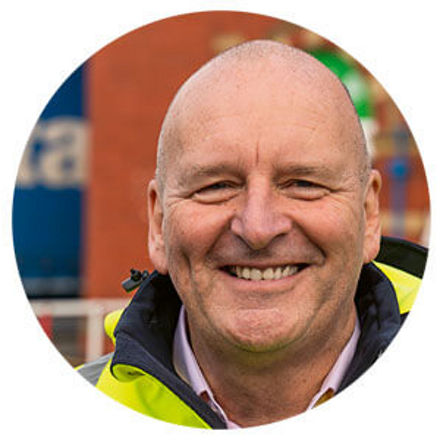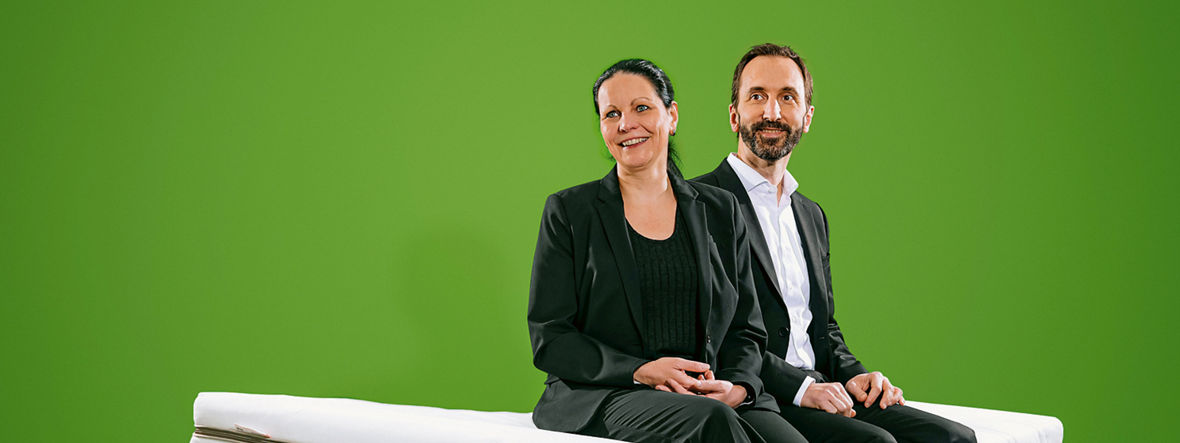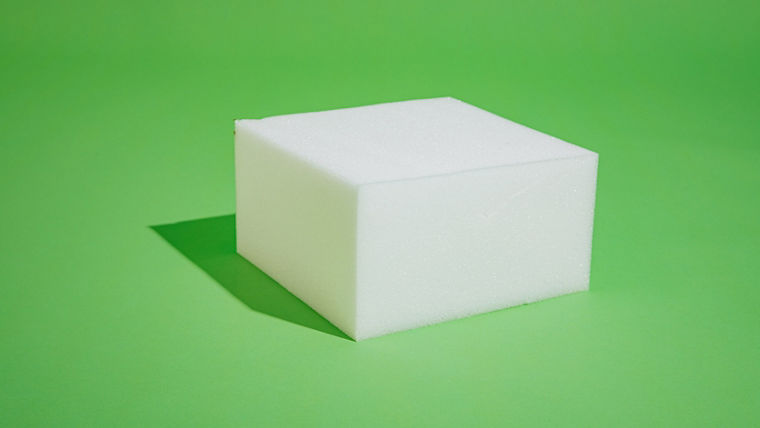On average, we throw away a worn-out mattress every five to ten years. This causes a huge environmental problem, because some 40 million mattresses have to be disposed of each year in the EU alone. If they were laid on top of one another, the resulting pile would be 8,000 kilometers high. This amounts to around 600,000 tons of waste, of which more than 300,000 tons is polyurethane foam. Remove So far and replace with Currently, the mattresses have mostly ended up in landfills or are “thermally recycled”—i.e. burned in power plants or waste incineration plants. Obviously, this is not environmentally friendly. With every end-of-life mattress, the raw materials and energy used for production and transport go up in smoke or are converted to heat.
Annegret Terheiden wants to change this. More than three years ago, Terheiden, who has a PhD in chemistry, teamed up with colleagues at Evonik’s business incubator Creavis to initiate a recycling project. Their aim is to break down used mattresses into their chemical components and make them recyclable. The process should be so good that the quality of the recyclate can be compared with conventional raw materials. This goal now appears to have been achieved. What is more, a few weeks ago colleagues from Evonik’s Life Cycle Management examined the ecological footprint of the new recycling process in detail. The review showed that the process reduces the carbon footprint by more than half in comparison to mattress production using fossil raw materials. “And we want to improve it further,” says Terheiden.
On a cloudy, cold January morning, Terheiden and other researchers from the project team are working on the process at the Essen-Goldschmidtstraße location. Building E-18—red brick on the outside, bright neon on the inside—is home to the Comfort & Insulation business line, which focuses a lot on foam. “Our recycling project was initially a small spin-off topic,” says Terheiden. It emerged from her main job of developing additives for the foam industry. Terheiden, who is now 50, has been working in this area since she joined Evonik in 2006. “I translate the requirements of our customers—we call them foamers—into chemical ones,” she says.

Terheiden’s job is to provide technical customer support and manage the development of new additives. After all, the precisely tailored additives should meet the customers’ requirements. These additives make car seats dimensionally stable, and mattresses and sofa upholstery particularly comfortable. Terheiden is now in charge of Evonik’s technological unit for flexible foams worldwide.
DURABLE—BUT HARD TO SEPARATE
The material she deals with the most is polyurethane (PU). It is used in the manufacture of mattresses and upholstered furniture, among other things. Typical PU foam for mattresses is created by the reaction of isocyanate (TDI) with polyether polyol and water and with the addition of various additives. Carbon dioxide is released as a by-product, causing the mixture to bubble up like a hot spring. Instead of collapsing again afterwards, PU retains its wide-meshed web-like structure. PU compounds are wear-resistant, which benefits the lifespan of the end product. However, this property is a hindrance for recycling, which requires these compounds to be broken up.
“Developing the recycling process completely anew was uncharted territory for us,” says Terheiden. “In the case of the additives, we work with molecules that we are familiar with. We are experienced in this area, and our business line is the world market leader in the field. However, our expertise at Creavis, for example, makes it possible to also tackle completely new innovation projects.”
The time for her idea came in 2018, when Evonik decided to focus more on the circular economy and sustainable production. From now on, new products, but also those from the existing portfolio, should be compelling not only because of their concrete benefits, but also in sustainability analyses. Terheiden was also encouraged by a meeting with experts from the furniture chain IKEA, one of the most powerful voices in the foam industry. “They told us at the time that by 2030 all their mattresses should be made entirely from reclaimed and renewable raw materials. That was challenging and gave us a nudge,” Terheiden recalls.

GOVERNMENTS DEMAND A RECYCLING SOLUTION
The processes that had been commercialized until then did not allow PU to be completely broken down back into polyol and isocyanate. Instead of individual molecules, the processes create mixtures of short-chain oligomers, which lead to far poorer foam properties than the original ingredients. A maximum of 20 percent of fossil polyol can be replaced with this process in the manufacture of new mattresses; otherwise the product properties will suffer. Terheiden wants to achieve a better result. The research work began back in early 2019, and Creavis was involved in this work from the very start. It is responsible for exploring business ideas for Evonik in new areas and markets. Thus, Terdeiden can concentrate on the chemistry and the application of the end product.

As a “flexible foamer,” as chemists in this field call themselves, she knows that European Union regulation requires a recycling solution for PU foams. The “Directive (EU) 2019/904 of the European Parliament and of the Council on the reduction of the impact of certain plastic products on the environment”—also known as the “Plastic Directive” for short—stipulates that by 2025 many plastic products must consist of a quarter of recycled material. Manufacturers must also present a plan for recycling their products at the end of their useful life. “PU is not yet regarded as strictly as single-use plastic,” says Terheiden. “But it’s not a question of whether that will happen, but when.”

In her office on Goldschmidtstraße, Terheiden puts on a white lab coat and makes her way to Michael Ferenz’s lab. Ferenz, who is an experimental chemist, joined the recycling project a year ago and has been responsible for the experiments in the laboratory in Essen since last summer. Behind a raised pane of safety glass is a shiny silver head-high apparatus: a hydrolysis reactor with a capacity of five liters. “In there I separate the PU foams with the help of additives,” says Ferenz. The list of ingredients is constantly being optimized. “First we used finely ground PU ‘snow’,” says Ferenz. “However, this has a very low bulk density, which made it significantly more difficult to fill the reactor. So we are now working on other dosage forms.”

»This is a key milestone to achieving a circular economy.«
IAN W. ROBB CEO VITA GROUP
After loading, Ferenz sets the parameters for the experimental setup. The reactor has a laptop wired to it. This laptop depicts colorful curves from the last experiment and enables Ferenz to command and control everything. The temperature in the housing is shown in red, the temperature in the reactor in orange, and the pressure in blue. The last curve shows the stirrer rpm. It ensures that all reactants are mixed well.
If you ask Ferenz what exactly happens in this pressure cooker, you will get a quick refresher on chemistry. After clicking on his pen and getting out a notepad, he writes down the key to recycling success. It was discovered during research and employs hydrolysis, one of the fundamental reactions in organic chemistry, by using a catalyst. “We don’t yet know exactly how it works,” Ferenz admits. “The working hypothesis is that the catalysts bring our reactants together better.”
TACKLING THE URETHANE FUNCTION
Ferenz and his colleagues use a catalytic system to split the polyurethane. By using a catalyst, the reaction can proceed under milder conditions. The catalyst ensures that the necessary chemical bonds are broken quickly and efficiently and that the reaction can take place within an acceptable period of time.
Ferenz shows what the result looks like in a small bottle. It contains what remains after the successful hydrolysis of PU foam: a deep brown liquid containing pure polyol and an amine (TDA). The latter can be converted into the isocyanate (TDI) in a subsequent reaction, resulting in precisely those substances that are required for the production of polyurethane.

In order for the molecules to be suitable for foaming again, they have to be cleanly separated from one another. “It took us a long time to get this far,” says Ferenz. Countless experimental setups provided useless parameters. Lots of catalysts and additives proved to be unsuitable. It was basically the normal life of a researcher. However, the proof of concept has now been achieved: a completely closed circuit without the addition of fresh polyol.
That was the starting signal for many experts at Evonik, especially in process engineering. Particle technicians are clarifying how mattresses can be shredded better, fluid process technicians are looking for a solution to separate the dark brown liquid into its components more quickly and cleanly, digitizers, measurement and control technicians, environmental technicians, and safety technicians are all solving problems relating to the process. The result is still not completely perfect. Although the foams made from the recycled molecules behave flawlessly, they are brownish in color. Polyol derived from fossil sources is colorless, unlike its recycled chemical twin.
A MILESTONE FOR THE FOAM INDUSTRY
Despite these challenges, partners from industry are already very impressed by the process—for example the British flexible foam manufacturer The Vita Group, which produces high-quality mattresses and works closely with Evonik. “We have trialled Evonik’s recycled polyols in several of our flexible foam formulations and the outcome has been very positive,” says Vita CEO Ian W. Robb. The company considers itself a pioneer in the environmentally friendly production of mattresses. The outstanding environmental balance of the recycling project is therefore a decisive factor for Robb. “We see it as our responsibility to be at the vanguard of the development of eco-friendly technology (within our industry),” he says. “This partnership represents a key milestone on our journey to achieving a circular economy.”
At Evonik, the recycling project now resembles a huge mosaic that is being worked on in parallel at several locations. Business lines beyond Comfort & Insulation’s foam experts support the project. For example, colleagues from the Crosslinkers unit made their facilities available at the Marl Chemical Park. However, the big picture should be visible in Hanau in a few months. A pilot plant is being built there in which the components of polyurethane are to be obtained in larger quantities. The plant is the responsibility of process engineering project manager Andree Blesgen, who joined the project in 2020. Instead of five liters, as in the previous reactors, the new plant should produce a multiple of that amount. “We hope to go into operation in 2022 and to advance into the tonnage range with the new plant,” says Blesgen.

That would be extremely rapid progress. From patent research to the miniplant in three years—that’s really quick,” says Blesgen. One of the reasons for this is the enthusiasm within the company for the project. “It’s great fun to do something that is so environmentally beneficial. This generated an incredible amount of team effort,” he says. The project is even paying off for Blesgen, 45, at home. “When I used to talk about my job, my children were only moderately interested. However, they find it really exciting that I’m now helping to make mattresses recyclable,” he says.
ELEMENTS-Newsletter
Get exciting insights into Evonik's research and its social relevance – conveniently delivered to your inbox.




